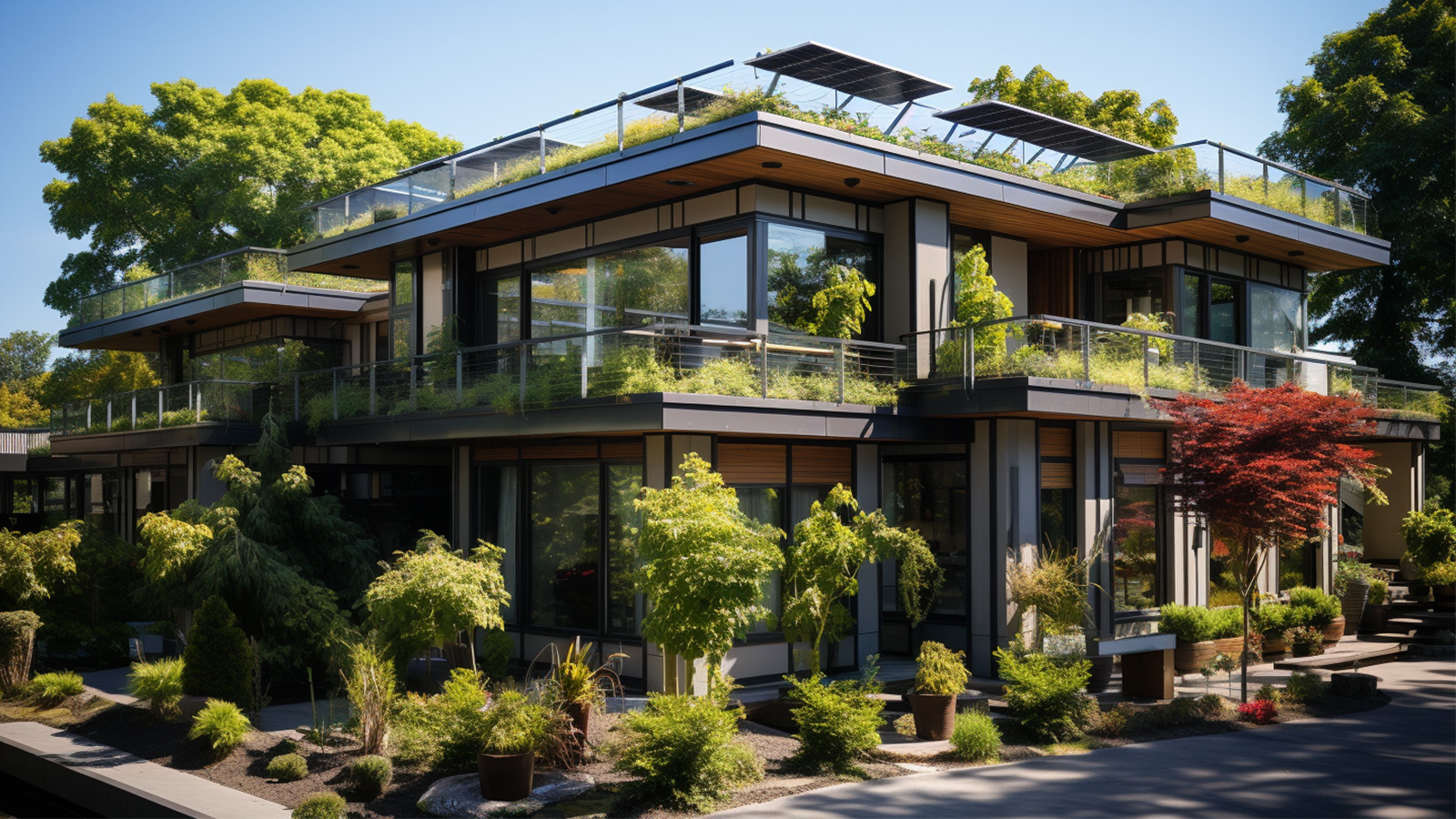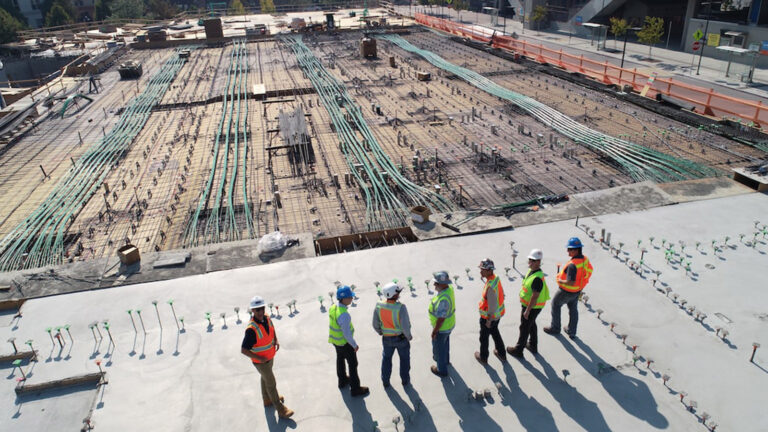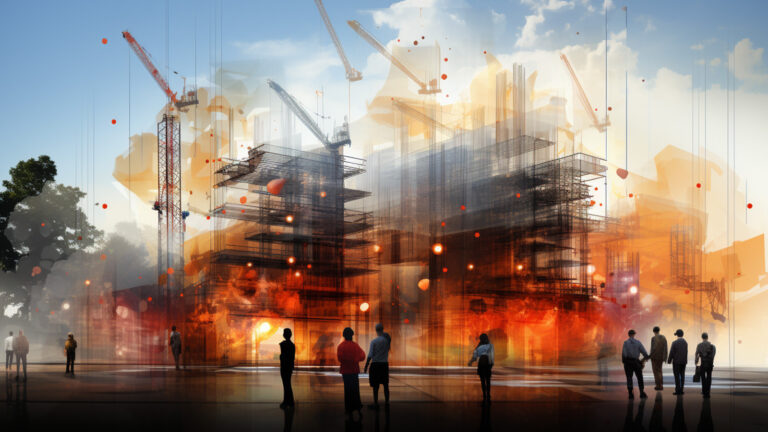
As we step into the 21st century, making sure that construction is sustainable has become more and more important. LEED Certification and other green initiatives are having a big impact on how our future built environment will look like. So what’s all this about? What kind of benefits can be reaped by businesses as well as the environment due to these green practices? In this blog post, let us find out! We’ll discuss regarding advantages related with LEED Certification such as cost-savings, enhanced public image and improved occupant health & productivity etc., thereby uncovering just how opting for sustainability could help create a healthier tomorrow for everyone.
Understanding the Importance of LEED Certification in Construction
The construction industry has the special responsibility of affecting multiple important aspects – from environment to economy and public well-being. LEED (Leadership in Energy and Environmental Design) certification is now an established system for evaluating how good buildings perform when it comes to ecology, finance, as well as social factors. This program was created with a purpose: encouraging green building practices while raising awareness about looking after our planet by awarding builders who meet requirements set up beforehand. Sounds like a win-win situation, right?
It’s clear to see why LEED certification is becoming increasingly important in construction. Not only does it mean cost savings, but businesses can gain a positive public image from embracing sustainability initiatives and at the same time improve occupants’ health and productivity – all of which are great advantages! By following design techniques for reducing energy consumption that come with meeting LEED requirements like proper insulation installation or using more efficient appliances/lighting fixtures, businesses not only help reduce pollution levels out there – they also lower their long-term operating costs associated with heating or cooling systems. Wouldn’t you love to have those benefits?
Not only can businesses save money on utilities bills, but they may also qualify for government-backed financial incentives such as tax credits when meeting the standards set by LEED rating system. When implemented properly, sustainability initiatives are a fantastic way to give business’s public image an extra boost – particularly among younger generations who have come to prioritize green initiatives over more standard economic measures when it comes time for them make decisions about working and investing in certain places. What’s even better? These types of activities show that companies aren’t just looking out for their own bottom line – they’re contributing positively to society too!
Incorporating sustainable building processes into construction projects has been seen to have positive impacts on occupant comfort, due mainly to improved indoor air quality. People that are exposed to better air find themselves able to concentrate more throughout the day which leads directly to higher productivity levels – a great benefit for businesses! Moving away from environmental benefits and towards tangible ones, LEED certified buildings might also reduce water consumption through efficient plumbing fixtures or alternatively via landscaping designs utilizing drought-resistant plants as opposed traditional grassy yards. Therefore giving us an insight about having multiple advantages while making use of these certifications in our project implementations.
When it comes to sustainable construction projects, one of the great benefits is being able to reduce waste in landfills. This can be done by utilizing recycled materials like steel beams from deconstructed buildings during new builds; ultimately creating aesthetically pleasing structures with a minimal environmental footprint. LEED certifications are just one example of how sustainability principles play an important role throughout all stages of development — beginning with preconstruction planning and continuing through project completion. With careful consideration into green initiatives, we have the potential create livable cities for ourselves now while still keeping resources available for generations to come — wouldn’t that be something special?
Exploring Sustainable Building Processes and Their Benefits
The construction industry is undergoing a rapid transformation, and sustainability has become one of its biggest priorities. LEED certification is quickly becoming an essential part of sustainable building practices to help the environment and people alike in achieving green objectives. There are plenty of advantages that come with using such processes: from cost savings to a better public image. What’s more, it garners global recognition as being at par when it comes having superior performance regarding environmental concerns for buildings or communities.
Doing your part to help the environment can seem like an uphill battle, however with LEED certifications it’s now easier than ever. This certification is all about encouraging people to be more efficient when it comes to energy, water conservation and waste management practices as well as material selection. These strategies not only reduce environmental impact but also create healthier places for people to connect in! And that’s not even mentioning the cost savings you get from lower bills and increased property value due to a ‘green’ labels – which could make buyers see your home or business in a whole new light. So by getting certified through LEED you’re helping both yourself financially while at the same time contributing something positive towards our planet: sounds like win-win situation if I’ve ever heard one!
Apart from economic profits related to LEED certified buildings, there are social benefits as well. Building owners or developers can show responsible use of resources and gain improved public image – which is surely a plus for their reputation both among customers but also with local governments who might provide grants based on particular requirements corresponding with the standards set by LEED certification program. Moreover, occupants of these structures will find themselves in better health owing to higher air quality inside along with increased efficiency because of more comfortable working situations without loud noise levels or too hot/cold temperature conditions within the building itself. To sum up all this information it’s obvious that sustainable practices like those embraced by LEED have an impressive potential when making our built environment much healthier while simultaneously bringing society large advantages through direct financial profit together side social gains connected – but at same time not compromising any comfort enjoyed by people staying indoors!
How Sustainability in Construction Leads to Cost Savings
Sustainability has been gaining more and more prominence in the construction field lately. It is no secret that going green – LEED certification as well as other sustainable building strategies – can have tremendous repercussions on our built environment’s future. Yet, what numerous individuals do not understand is that taking up sustainability may also lead to cost savings for constructors and developers alike.
A major way through which being ecologically conscious contributes to saving money would be energy efficiency
Insulating, installing solar panels, using LED lighting and other materials to cut down energy usage can lower utility bills in the long run. Moreover, certain local authorities offer rewards for eco-friendly projects – like tax reductions or cash refunds – that could further reduce expenses of implementing green building standards. Also worth noting is water efficiency – sustainability initiatives here too may lead to economy benefits. Considering how much we depend on it every day this should be a focus area anyway!
By installing water-efficient fixtures such as low-flow faucets or dual flush toilets in new buildings or renovations, builders and developers can save money on their monthly water bills by reducing the amount of consumed H2O while still making sure inhabitants feel comfortable. Furthermore, when done correctly sustainable building practices usually lead to higher quality projects that require less maintenance due to fewer errors from improved workmanship standards (e.g., air sealing). This means spending less cash over time for repairs which helps keep total project expenses down in the long run. Finally, it’s been proven that having sustainable construction tools enhances public perception among stakeholders like investors who look for socially responsible investments; this rise in popularity tends to create an increase demand from buyers willing pay more for ecological products or services – a great help for businesses looking to make money while playing graciously with nature!
Impact of Green Initiatives on Public Image
Recently, green initiatives and sustainability efforts in the construction industry have been on the rise. The Leadership in Energy and Environmental Design (LEED) certification program has gained momentum among top businesses as it provides them with a platform to present their dedication to conservation. Obtaining LEED certifications usually gives buildings an elevated public image since they demonstrate a genuine investment toward using eco-friendly processes and materials – something that holds great importance for customers who consider supporting organizations that are serious about preserving nature. Are you looking forward to joining these growing ranks?
A business’s public image can be improved by green initiatives as well. Utilizing renewable energy sources or implementing more efficient technologies are just a few tactics that could lead to positive results. For instance, lots of organizations have installed solar panels on their rooftops and LED lighting systems which not only cut electricity bills but also demonstrate an environmental awareness that customers and potential investors highly value.
What’s more, these measures often come with incentives such as tax credits or rebates from local governments which can help businesses to save money while still keeping up the environmental and performance standards. In addition to being eco-friendly, green building practices make for healthier living spaces due to improved air quality, natural light levels and acoustics. Research shows that improving these aspects of an indoor environment can lead employees feeling more productive whilst reducing sick days caused by unhealthy air conditions -which all contribute positively towards a company’s profit margin at the same time it helps boost its reputation in their community too! To sum up: sustainable building isn’t just about protecting nature but also safeguarding people’s health – don’t you agree?
Connection Between Sustainable Buildings and Occupant Health
The link between sustainable buildings and occupant health is vital. LEED certification and green building practices provide a wonderful opportunity to have a positive influence on the construction of our future. Sustainable structures are designed with energy conservation in mind, as well as providing air quality that is healthier for people living or working inside them – something many folks find attractive because less pollutants mean better overall health! Moreover, another advantage of these kinds of buildings is they offer natural light which greatly improves occupants’ wellbeing too. How awesome would it be if all work environments had access to beautiful sunlight?
Natural sunlight has been shown to do wonders for mental health, reducing stress levels, improving cognitive performance and helping out with sleep patterns. This means that those who live or work in green certified buildings are more productive due to elevated mental wellbeing which can even lead to better physical health outcomes overall. Plus, these types of structures usually incorporate acoustic control that lessens noise pollution from external sources such as traffic or construction noises while also suppressing the ambient sound within the building itself; thus creating a much calmer environment ideal for working hours with fewer distractions leading inevitably towards increased productivity among workers and residents alike.
Considering all this though one must not forget about some other advantages associated when investing into projects like LEED certification or any other type of sustainable building processes – they may result in cost savings over time but additionally give organizations an improved public image since customers nowadays value businesses being conscious about their environmental impact compared with others non-green companies!
The Future Built Environment Shaped by Sustainability Practices
The notion of sustainability has been increasingly becoming more and more crucial in the modern built environment, indicating our current attempts to be better responsible for energy consumption as well those efforts that are put into environmental conservation. What is notable here includes things such as improved indoor air quality, reduced water usage and increased efficiency on energy matters – all key elements when it comes to sustainable building projects. LEED (Leadership in Energy & Environmental Design) certification plays an important roleconcerning this quest by giving developers a worldwide accepted framework which reviews structures’ performance and also develops standards towards green construction practices.
Talking about LEED-certified projects, buildings are assessed against criteria like energy efficiency, water savings, materials selection and waste management strategies along with indoor air quality. On top of it the scorecard takes account innovation in design plus regional aspects such as proximity to public transportation or access to renewable resources for example solar power or wind energy. These exacting standards have been really helpful in spurring innovative solutions within construction industry towards more environmentally sound methods that can help cut emissions together with improving tenant healthiness and productivity – isn’t this fantastic?
Embracing sustainability comes with two benefits: not only can it lead to cost-saving by efficient use of natural resources, but also better public image and even occupant health due to improved air quality in buildings. Examples like installing daylight sensors for lighting control based on ambient light conditions – avoiding glare from direct sunlight into living spaces – or investing high efficiency HVAC systems help lower monthly cooling bills while reducing emissions from inefficient appliances which could result in increased cognitive function amongst occupants because of the better ventilation control leading to higher concentration level during work or school hours resulting in more productivity . All these improvements have pushed sustainable practices into becoming an essential part modern construction projects as they allow for savings costs plus improve public opinion while ensuring comfort through good air quality inside buildings.
In conclusion, the significance of LEED Certification and sustainable building practices in construction for our built environment’s future is extraordinary. Not to mention these green initiatives are beneficial environmentally, but they can also bring cost savings, a better public image plus improvements in occupant healthiness and productivity too. When we commit to sustainability on construction projects then this creates a much more livable world for generations ahead- that really cannot be downplayed or overlooked!
Are you ready to take your construction practices up a notch and make an impact on the environment at the same time? If so, Hanthel Consulting is here to help. With more than two decades of experience under our belt, we possess both knowledge and expertise that can assist in helping you understand and implement LEED certification as well as other sustainable building methods. Not only do we provide comprehensive support services like energy analysis, life cycle cost analysis waste management strategies – but also green material selection, indoor air quality testing commissioning services water conservation strategies – all tailored just for you!
Our team realizes how important sustainability has become today for businesses around the world. We’re able to create integrated plans which will not only reduce environmental damage yet result in economic opportunities too! Get in touch with us now if this sounds interesting: by having Hanthel Consulting on board – it’s never been easier or profitable when striving towards being greener!



